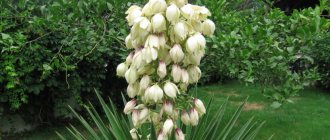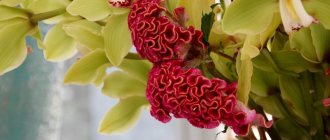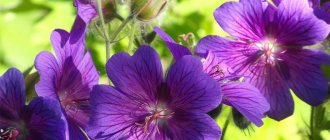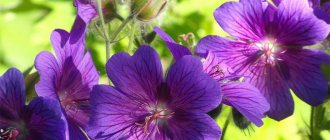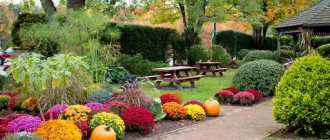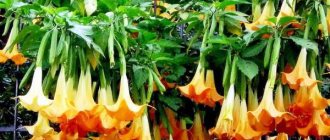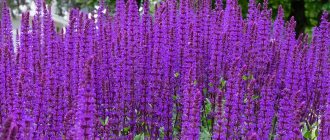- May 10, 2019
- Decoration of flower beds and garden
- Anastasia Efremenkova
Gerberas are so similar to daisies, but they have larger flowers, and their color range is much more varied. These plants have been grown at home for a long time, but growing gerbera in open ground can cause some difficulties. But if you really want your garden to be decorated with these bright flowers, then all these difficulties will seem like trifles to you. These plants love warmth, so it will be easier to grow them in the southern regions. But this does not mean that residents of the middle and northern zone need to give up their dreams. There are some secrets that will help them. If you take the care and planting of garden gerbera seriously, you will definitely admire its bright blooms.
Description of the flower
Garden gerbera is a herbaceous perennial that can be grown not only on a windowsill, but also in open ground or in a greenhouse. This flower perfectly complements various flower arrangements and becomes a decoration for any garden.
Gerbera leaves are elongated, pinnately dissected, and rich green in color. In the root zone they are collected into a rosette. The root system of the plant is quite well developed. In some species, the leaf blade, petioles and peduncles are covered with short fluff. The inflorescences are presented in the form of baskets, which are located on long peduncles reaching a height of 60 centimeters. There are no leaves on the peduncles. Inflorescences can be of different diameters, it all depends on the variety. The smallest flowers have a diameter of 4 centimeters, and the largest ones - 15 centimeters. After flowering is completed, a fruit is formed in place of the inflorescence, in which the seeds are stored.
The soil
To grow indoor gerbera, it is best to purchase ready-made store-bought universal soil for flowering indoor plants. In the wild in South Africa, gerbera grows in soils rich in minerals but almost devoid of organic matter.
It is also possible to prepare the substrate yourself. It should be nutritious, loose, with a slightly acidic reaction. Mix leaf soil, peat chips, coarse sand (or sphagnum moss), small pieces of charcoal in a ratio of 2:1:1:1. Add some pine bark. It is important that the soil does not contain humus or compost - a minimum of organic matter! (They may burn the tender gerbera roots). The soil mixture of the specified composition will be quite fertile and permeable, it will provide free access of air to the root system of the plant.
Gerbera in open ground
Gerbera can decorate absolutely any garden or flower bed with its bright flowers. However, before you start growing this plant, you need to take into account that it came to us from Africa, which means it loves warmth. Gerbera feels quite normal in the middle zone of the country, but only if there are no sharp temperature changes between day and night. But the real test for garden gerbera is the autumn and winter periods, since it is not at all easy for it to survive in our winter conditions. Every gardener should know that gerbera is a perennial plant, but it can easily become an annual if it is not dug up one winter.
As you can see, although it grows in our country, it is better to choose a greenhouse or greenhouse for planting it.
Residents of the southern regions have every chance of successfully growing gerbera in the garden. Here the flower will not need to be dug up for the winter; you just need to cover the roots.
Temperature and humidity
Proper care of indoor gerberas also includes observing temperature restrictions. Although this is a fairly hardy plant, there is still no need to overuse it. Having entered a dormant period, Transvaal chamomile (another name for a flowerpot) may stop blooming altogether. The optimal conditions for its cultivation are:
- in winter at least 11-14°C;
- in the warm season from 20 to 25°C;
- limit the possibility of frequent temperature changes;
- provide relatively high humidity.
It is not recommended to keep the plant on the balcony in winter. Dampness and cold put the gerbera in a sleepy state. Over time, she may just die.
The homeland of this flower is Africa (Madagascar Island), as well as Asia. In this regard, it is important to take into account that the climate in those parts is tropical. Therefore, it is best to create natural living conditions for an indoor gerbera flower.
Bloom
Perennial garden gerbera begins to bloom with the onset of summer, and this process does not stop until it ends. It is better to just admire the bright blooms and not try to collect a bouquet, as this can have bad consequences. The flower must not just be plucked, but directly unscrewed from the leaf rosette. If even a small piece of the stem remains there, the plant may rot, which will later lead to its death.
Conditions for growing gerbera
If you want to grow these bright flowers in your garden, then your site must meet the following requirements:
- In winter, gerberas should be kept at a temperature of +6-8 degrees. It is in such conditions that she feels great. If you are a resident of the southern region, then your gerbera will quite well tolerate a drop in temperature to -3 degrees, but only on condition that its roots are covered.
- Gerbera loves sunlight, but on especially hot days it is better to hide it in the shade. Don't be alarmed if its leaves droop a little at midday. By evening, when the temperature drops, they will come to life again.
- Gerbera should not be sprayed, and during watering you should try to prevent water from getting into the root rosette. If this happens, the process of rotting may begin.
What kind of pot do you need?
The diameter of the pot should not be too large, only 2–3 cm wider than the root system of the flower. Crowding in a pot is one of the conditions for abundant flowering of gerberas. Volume - approximately 1–1.5 liters.
A deep pot made of unglazed ceramics is best suited for gerberas - this will allow air to pass well to the roots of the plant. But in winter, on a cold windowsill, the roots of the gerbera in such a pot can become hypothermic. This should not be allowed, because gerbera is very sensitive to this. In this case, foam or a wooden stand under the pot for thermal insulation will help.
Growing seedlings
First of all, you need to select high-quality planting material, but keep in mind that gerbera seeds remain viable for no more than 10 months. You can collect the seeds yourself if you already have these flowers in your garden. But this is a troublesome matter, since in this case you will have to pollinate the plant yourself. Therefore, it is better to purchase planting material in a special store.
Seeds are planted from January to March. Please note that flowers that were grown from seeds will not begin to bloom until 11 months after planting. Therefore, it is advisable to sow garden varieties in the spring.
Reproduction techniques
A number of propagation technologies are used: Propagation from seeds. The best period for sowing seeds is March. They are sown in a loose mixture of nutrients from sand, peat, and the soil is moistened.
Requirements for rapid germination are stable moisture, t+18°C and above, daily ventilation of the greenhouse. In the phase of 2-3 living leaves, the main transplant is performed. 2nd replanting - in the amount of 4-5 leaves.
Cuttings. Cut off a portion of the stem with a leaf or node. Place the cut side in wet sand. Keep t +25°C. Roots appear instantly - after 1-2 weeks. The bush is divided at the age of 3-4 years, and then replanted. We maintain the required humidity in the pot.
The process of planting seeds
The seeds are deepened no more than 0.3 centimeters under the ground. It will be better if you simply spread them on the surface of the moistened soil, and sprinkle a thin layer of dry soil on top. The distance between seeds should be approximately 3-5 millimeters. Such density is not scary, since their germination rate is low.
Next, you need to cover the containers with glass to create a kind of greenhouse. Remember to remove the glass from time to time to remove condensation. At the same time, you can moisten the soil. To do this, it is better to use not a watering can, so as not to wash the seeds, but a spray bottle. The air temperature in the room should not be lower or higher than +18 degrees.
In just a week you will be able to see the first shoots. This means that the coating can be removed. Two weeks after the seedlings emerge, the first true leaves will appear.
Next you should do the picking. It is carried out when four true leaves appear on the seedlings. Each seedling will need to be transplanted into a separate pot with a diameter of 8-10 centimeters. The air temperature in the room where the seedlings will be located should be kept at +18-20 degrees. The pots should be in a well-lit place, but not in direct sunlight. Please note that some seedlings may stretch. This means they don't get enough sunlight. In this case, you will have to correct the situation by installing fluorescent lamps above the gerberas. Also, drafts should not be allowed in the room. If you really want to grow gerberas, you need to be extra careful when it comes to watering. They can only be carried out when the top layer of soil is completely dry. Moreover, water for irrigation should only be at room temperature.
What can destroy seedlings
As you already understand, gerbera is a delicate plant that requires special care. Therefore, its seedlings are quite easy to destroy. To avoid this, you must remember what exactly can have a detrimental effect on their condition:
- water is too cold for irrigation;
- increased air humidity in the room;
- deviation of the air temperature in the room from the required values;
- low light;
- too much deepening of the root collar during picking.
Transplantation into open ground
You can transplant seedlings into open ground only when you are sure that night frosts will not return. The best time for this is the end of May - the beginning of June. If you plant seedlings later, the plant may bloom later or not at all.
But before planting seedlings, you need to choose the most favorable place. You should choose an area with good lighting, but without direct sunlight. If you plant a gerbera in the shade, you may not even hope that it will ever bloom. Even if such a miracle happens, the flowers will be small and rare. If the summer is too hot in your latitudes, then make sure that the sun does not hit the gerbera at midday. You also need to choose a place where there are no strong winds or drafts.
So, before planting, you need to dig a hole that is slightly larger in size than the earthen ball in which the seedlings are located. The bottom of the hole can be lined with small tree branches, which will serve as excellent drainage. They will need to be sprinkled on top with a thin layer of soil. Seedlings are transplanted using transshipment methods, i.e. a seedling from a pot together with a lump of earth is transferred to a hole. All voids in the hole will need to be filled with soil and compacted well. Please note that there is no need to deepen the gerbera; its leaf rosette should rise a centimeter above the planting level. After planting, the plant must be watered at the root.
Rules of care
Gerberas need to be watered regularly. This plant loves the golden mean in soil moisture, that is, the soil should not dry out, but it should not be over-moistened either. On average, gerberas need to be watered twice a week, but always pay attention to precipitation and air humidity. Water more often when buds begin to form, but when flowering begins, the amount of moisture should be reduced. The roots should always have access to oxygen, so after watering it is recommended to loosen the soil in the root zone.
From the origin story
It is not enough to learn how and where gerberas grow in nature; you also need to get acquainted with the history of flower culture. Not many people know, but the name “gerbera” is well known today, thanks to the famous botanist Jan Gronovius, who lived in the 18th century. At his suggestion, the flower began to be named in honor of his good friend, Traugott Gerber.
Gerberas simply amaze with their diversity
There is another theory - the name of the plant has Latin roots and comes from the word “herba” (grass).
Fertilizers
It is not recommended to use organic matter for feeding. Because it can cause various fungal diseases.
A complex mineral fertilizer for flowering plants is best suited. You can buy it at any flower shop. When the gerbera begins to grow green mass, it needs nitrogen-containing fertilizers, but when the buds bloom, you need to use fertilizers that contain calcium and potassium. It is thanks to the latter that flowering will be longer and more abundant.
Feeding should be done once every two weeks.
Wintering in temperate regions
In such regions, it is customary to grow gerbera as an annual. Of course, many people feel sorry for the efforts they made. Therefore, many gardeners dig up gerberas from the garden beds for the winter and move them to more favorable conditions. The plant must be dug up along with a lump of earth and planted in a container of the appropriate size. Gerbera is stored under the following conditions:
- It is best to choose a basement with good ventilation, without drafts, and with a low level of air humidity;
- the air temperature should be 10-12 degrees, an increase to +15 is allowed, but not more;
- There is no need to fertilize, but watering should be done as little as possible.
If you don't have a basement, choose the coolest place in the house and place the pot there. There should be no bright light in this place. If you don’t like the fact that every winter you need to dig up a flower and plant it again in the spring, then just plant it in a suitable container. In the spring you can place it in the beds, and in the fall you can bring it indoors.
As you can see, planting a garden gerbera and caring for it causes a lot of trouble. But you can also see from the photos of these flowers that it’s worth it. Only the first year of growing gerbera in the garden and caring for it seem difficult, and then you just get used to all its features and whims. Moreover, she thanks the gardener for such beautiful flowering.
Types and varieties of indoor flowers - gerberas that are most popular
Less whimsical and tolerates apartment conditions well, the Festival and Durora are a gerbera mix with a variety of petal colors. The plants have large flowers and short stems, so they can be placed on a windowsill or other limited space. According to various sources, there are from 40 to 80 flower species in the world. For keeping as a houseplant, mini gerbera varieties up to 30 cm high are selected: Gerbera Happipot, Gerbera Hummingbird, Gerbera Ilios, etc. These varieties are often used in decorating a bridal bouquet from gerberas and creating flower arrangements.



